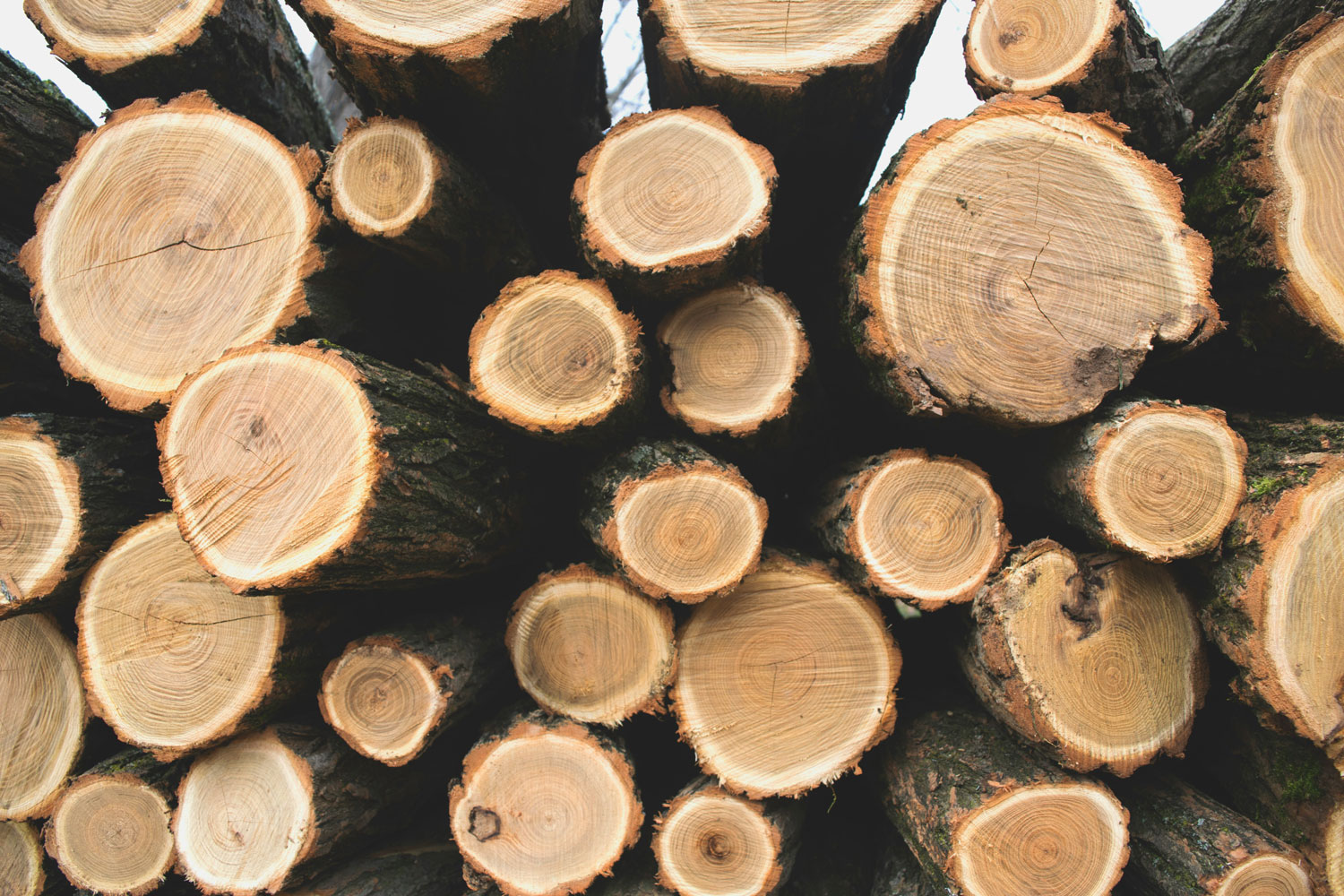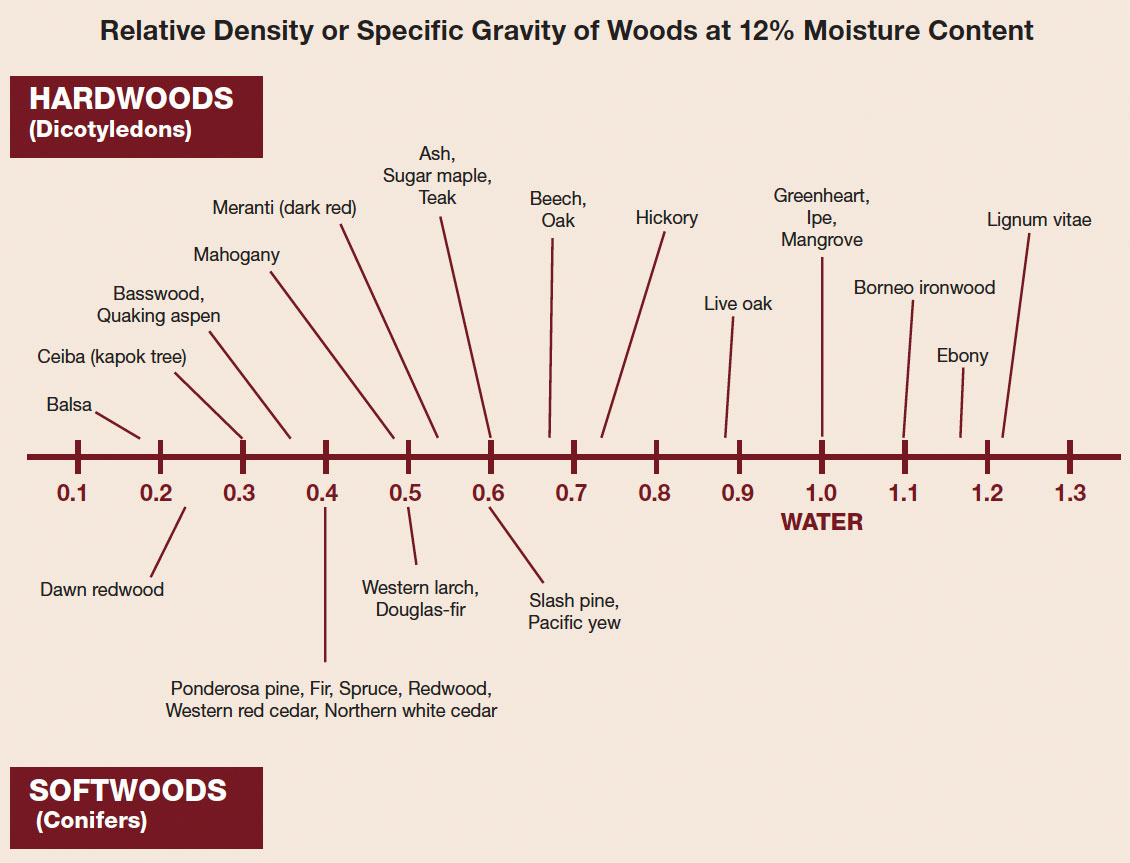
Does Climate Affect Wood Hardness?
Reader Charles Hammond of Kingston, Massachusetts, writes with a question about local timber growth:
“Where I grew up in England, local timber was a workout to saw by hand. The woods tended to be oak, hawthorn, beech, and a few other species. It made sense to me, when I was a boy and a young man, that trees that grew slowly in the cold, north of the 50th parallel, should be tough, hard, and strong! But then my father introduced me to a ‘redwood’ grown in Swaziland, which his staff had felled and sawn with 8′-long, two-man saws. He told me that it took the two chaps all day to saw through the trunk, and they had to sharpen the blade twice. That wood was hard!
“Burmese teak, meranti, and mahogany were among the very hard and tough woods that came from the tropics. Near where I live now, the Powder Point Bridge in Duxbury has stood in tidal water for more than 100 years. It is built of some kind of African wood. Shouldn’t hot, humid, and wet conditions produce rapidly growing trees with wide rings that won’t require much more than a good steak knife to cut? Why do the hardest woods seem to be grown where the weather makes one feel like a wet rag?”
The basic question that Mr. Hammond seems to be asking is whether trees produce wood of a certain hardness in response to climate signals. The answer is a qualified yes. The kind of wood a tree produces has evolved over millions of years in response to many factors, most notably climate, species competition, soil conditions, and light exposure.
Wood’s density, defined as its weight per unit of volume, is a quantitative measure of wood hardness. Wood scientists prefer to use the dimensionless quantity of specific gravity, which describes wood density in relation to the density of water, which is 1.0. Specific gravity is a good indicator of compression strength.

In the table, I have positioned some hardwoods and softwoods according to their specific gravity values at 12 percent moisture content. Of the woods listed, lignum vitae, ebony, Borneo ironwood, greenheart, and ipe are as heavy as water or heavier, and all are tropical.
This recalls an incident at a five-acre rock off the Maine coast almost 40 years ago. The U.S. Coast Guard decided to automate the lighthouse there, but that required building a helicopter landing pad for periodic maintenance visits. They shipped a load of Borneo ironwood to the island, but, having no landing area, they decided to float the timber to shore. You can guess the rest of the story. If ironwood ever becomes extremely valuable, divers may attempt to retrieve the submerged wood.
While the tropics clearly produce the heaviest, hardest woods, they also are known for species with moderate density and even for the lowest density wood—balsa. Trees in temperate regions tend to produce wood with densities in the moderate range, while their softwoods are somewhat less dense than temperate hardwoods.
These ranges for tropical and temperate species suggest that temperature does not directly influence density. What about moisture? Lignum vitae grows in open, very dry, sunny areas in South America. Ebony is an understory, rainforest species of West Africa. Balsa is a tropical rainforest species, as is mahogany. Teak is a monsoonal species, meaning it grows in distinctly wet and dry seasons, and mangroves are a coastal saltwater-adapted species. No pattern here.
Trees have evolved to respond to a complex suite of environmental factors such as light, temperature, and moisture in order to capture a particular ecological niche. This means that, under the same conditions, some species may adapt to quickly occupy an open site, grow very rapidly, produce low-density wood, and have a relatively short life. These we call pioneer species. Balsa, ceiba, and quaking aspen are examples among the hardwoods on the table.
Other hardwood species that are more shade-tolerant will grow slowly in the understory and capture the site when the pioneer species begin to die. These second-stage species need to develop larger crowns to shade out competition and therefore need a stronger stem to carry that load. Competition is most intense in the wet tropics, where a single hectare may contain more than a hundred tree or vine species, all competing for sunlight.
Even on dry sites where lack of moisture limits competition, a spreading crown can shade the ground around a tree, thus reducing soil evaporation. Lignum vitae is adapted to dry conditions where trees are spaced well apart and, therefore, is a short tree, which produces a large spreading crown of evergreen foliage. The high-density wood easily supports this huge crown.
But what about softwoods such as redwood and cedars? How can redwood grow so tall and live so long with such a low-density wood? If we eliminate the need for a large, heavy crown, the base of a tree trunk only needs sufficient compression strength to support a main stem of similar density. Therefore, the wood can have almost any density above a mechanical limit minimum.
Redwood is the tallest tree in the world but has wood density lower than aspen or basswood. It has a very narrow crown because redwood trees evolved at a time when competition from hardwoods didn’t exist. Currently redwoods, like all conifers, are losing the competition battle and occupy only a tiny fraction of their original range, one that in past geological eras spanned across North America and Europe.
Most conifers maintain site dominance by growing close together and having evergreen foliage that shades out competition year-round. This strategy works until a fire, weather event, disease, or logging opens the site to hardwood competition. Forest managers often use herbicides to control this competition in planted conifer stands.
Some conifers can tolerate nutrient-poor soils similar to the ones they evolved with and thus survive in bogs or dry, gravelly sites where hardwood competition is minimal. With a few exceptions, conifers are absent from the tropics but hang on in the cold, nutrient-poor boreal regions of the world.
One survival skill of long-lived species that is not revealed by density alone is the ability of a tree to deposit chemicals in the heartwood that are poisonous to decay fungi or bacteria. Pioneer species don’t need to worry about decay resistance; their only role is to occupy a site until longer-lived species take over. But, among longer-lived species, trees such as cedar and redwood that protect their heartwood can grow tall with wood of lower density than species such as ash and maple that have decay-prone heartwood that must have a strong ring of sapwood to prevent buckling if the heartwood decays. In the tropics, where decay organisms really abound, trees often develop both dense and decay-resistant wood that, as already noted, also lets them produce large crowns.
As boatbuilders, we make use of the myriad strategies that tree species have developed to successfully survive across millions of years. This variety allows us to choose from a menu of wood densities, level of decay resistance, and even, by selecting roots or branches, a variety of curved shapes for framing.
This “Wood Technology” article originally appeared in the May/June 2020 edition of WoodenBoat. Dr. Richard Jagels is an emeritus professor of forest biology at the University of Maine, Orono. Please send correspondence to Dr. Jagels by mail to the care of WoodenBoat.
